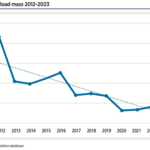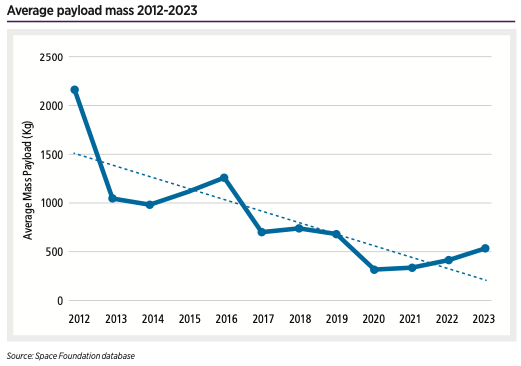2021
NASA share of U.S. federal budget, 1959-2025
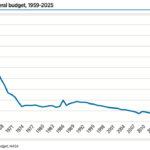
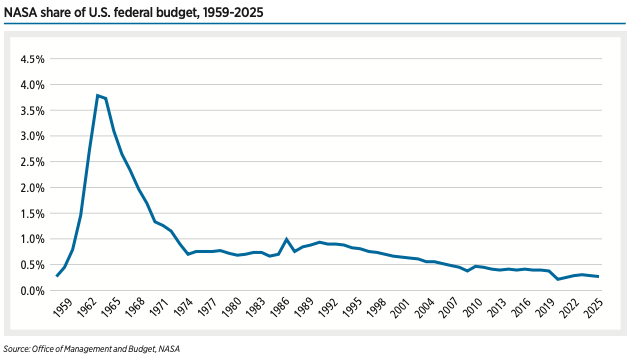
The overall Pentagon budget proposal for 2025 is $850 billion, $8 billion more than its 2024 request.
Vandenberg customer mission share 2014–2023
Top 3 commercial space sectors, 2015-2022
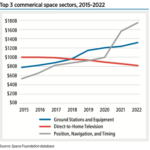
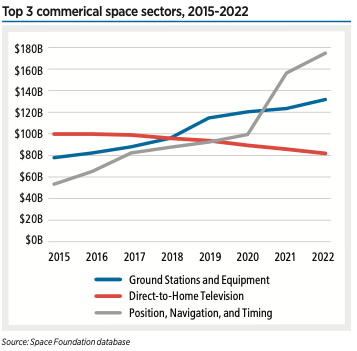
Commercial revenues continue to make up the majority (78%) of the global space economy. The top three commercial space sectors — ground stations, direct-to-home television, and position, navigation, and timing — totaled $373 billion in 2022.
U.S. spaceports hosting successful orbital launches, 2014-2023
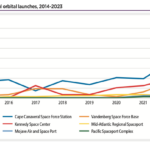
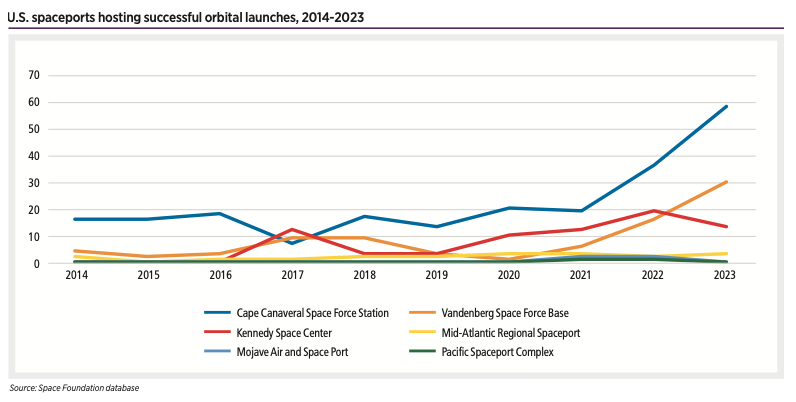
Launch services conducted 83 launches from Vandenberg and 72 from Kennedy, while Virginia’s Mid-Atlantic Regional Spaceport (MARS) at Wallops Island performed 19 launches.
Cape Canaveral customer mission share 2014–2023


Launches from Cape Canaveral were military-focused for the first few years, with civil missions not far behind.
Satellites lost by launch operator country and type, 2003-2023
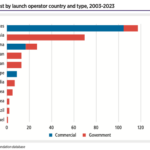
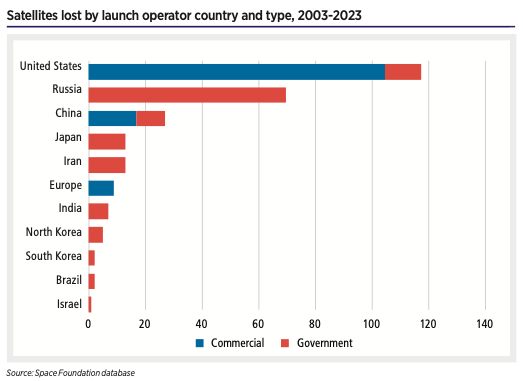
Despite the rising number of lost payloads, satellite operators are getting better at mitigating the harm done to their mission by a launch failure.
Launch service launches from Cape Canaveral and Vandenberg 2014-2023
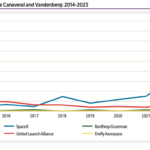
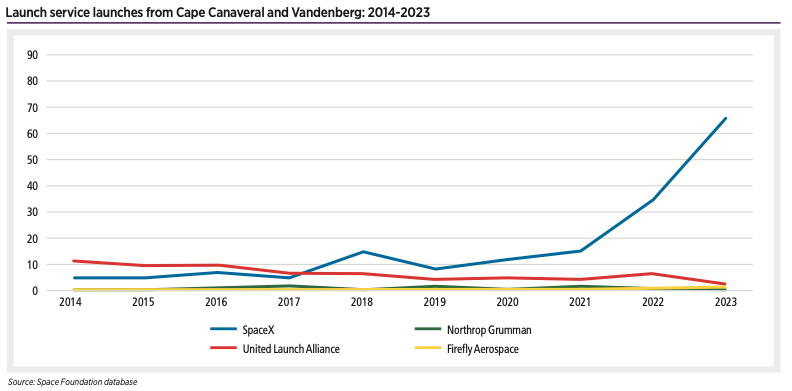
Launches from the Cape and Vandenberg have increased primarily due to one launch service provider: SpaceX.
Average payload mass 2012-2023
Japanese Government Space Spending, 2013-2023
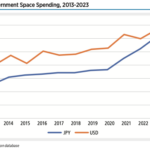
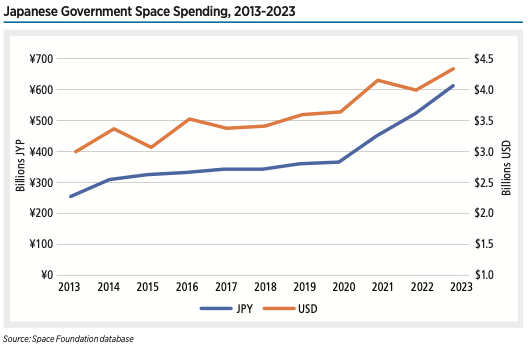
Japan’s space spending spans seven ministries and totaled ¥612 billion (UD$4.3 billion) in 2023. This budget has grown 68% since 2020 as the nation expands its civil and military space programs. The Ministry of Education, Culture, Sports, Science, and Technology (MEXT) — which houses JAXA — typically receives the majority of space-related funding.
Launch Attempts and Deployed Payloads, 1983-2022
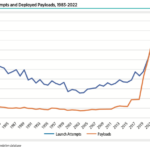
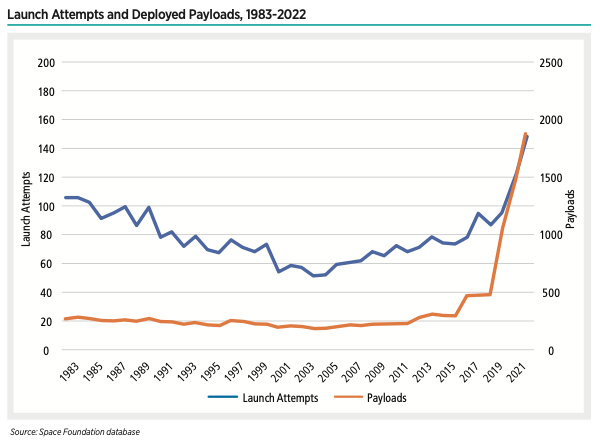
Two items stand out as primary examples of astronomers’ concerns: the SpaceX Starlink constellation due to its number of satellites and AST SpaceMobile’s BlueWalker 3 satellite due to its size — 693 square feet6 — which ranks as the largest commercial communications array in space.
